Many of us, at one time or another, will have the desire to write a book: a pacy novel, a tell-all memoir, or what have you. But having the know-how and discipline to actually write a book — not to mention the savvy to get it published — is another story (no pun intended).
If you’re looking to write and publish a book, I won’t sugarcoat it: you’ve got quite a journey ahead of you! But with a bit of creativity, determination, and knowledge of the writing and publishing process, you can become a published author and share your book with the world.
Here’s how to write a book and get it published in 10 steps:
1. Start with a “marketable” idea
If you want to eventually publish your book, you must consider its marketing potential from the get-go. I’ve seen far too many authors go into this process with high hopes, only to have them crushed by the industry because their book wasn’t “marketable” enough.
That’s not to say you should disregard the book you want to write! All I’m suggesting is to strike a balance between passion and promotability — which means taking the time to develop a strong book idea, rather than jumping straight into writing.
So what exactly makes for a “marketable” book idea? It's one that:
- Generates interest through a unique or topical premise;
- Fills a gap in the existing market, while also appealing to a defined audience; and
- Contains the promise of conflict and/or dramatic tension.
This applies to both fiction and nonfiction — even if you’re writing a memoir or the history of a popular figure, it still needs to have intrigue and narrative drive. For an example with elements of both fiction and nonfiction, let’s look at The Women by Kristin Hannah, a historical fiction novel which was one of the bestselling books of 2024:
- What’s the premise? A young woman joins the Vietnam War effort as a nurse, but finds the reality of war is far more shocking than she imagined.
- Who’s the audience? With a female protagonist and a historical angle, this book should appeal to female readers (of all ages) and male and female history buffs, particularly those interested in the 1960s and 70s.
- Does it promise conflict or drama? Yes — with much of the book taking place in the throes of battle, readers are promised drama, conflict, and life-or-death stakes.
- Does it fill a market gap? I can’t think of another recent novel with a similar premise, so I’d say it does!
This example shows just how successful a book can be when it has a powerful premise. So take the time to mull over your own — combining your initial inspiration with other elements that will make your book as compelling as possible. (PS: even if you don’t care about becoming a bestseller, it’s still important to have a strong premise to carry you through!)
2. Create a structured writing plan
Some aspiring authors might think publishing their book will be the hard part. But if you’ve never written a book before, I can tell you that simply finishing one is a Herculean task!
That’s why you need a solid plan to make it through. Your writing plan should include:
- 🗺️ Story planning documents, both a “messy” doc for brainstorming and a more organized outline of your book’s structure;
- 📝 A provisional writing schedule, complete with “butt-in-chair” time during which you’re only allowed to work on your book; and, perhaps most importantly,
- 📆 Deadlines for the first and final drafts of your book.
For those story planning documents, the easiest “way in” is usually the brainstorming doc: just jot down your thoughts, ideas, and research about everything related to your book.
That said, you should also create a more structured outline. This could consist of brief summaries of what each chapter will include, or — if you want to get granular — delve into individual characters, scenes, and subplots. (I won’t go over all the different outlining methods in this post, but be sure to check out this post on plot outlining if you want some guidance!)
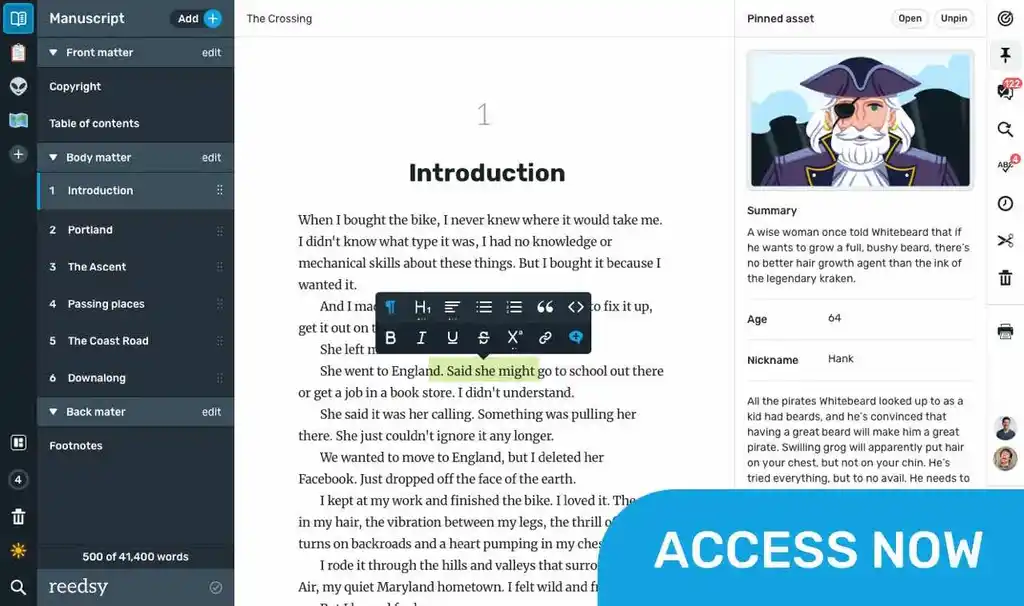
Try Reedsy Studio, a free outlining app
Use the Boards feature to plan, organize, or research anything.
The second part of this step is, well, your actual plan for writing. Think about:
- What time(s) in the day you’re naturally most productive;
- When in the week you can set aside large blocks of time for writing — e.g., maybe you’re only free on weekends; and,
- What would be some realistic yet motivating deadlines for each stage of your draft.
You can use a novel-focused tool like Reedsy Studio to set word count goals and track your progress. In my own experience, it’s fantastic for motivation and keeping your eye on the prize. Sign up for Reedsy Studio right here.
3. Self-edit your first draft
Let’s say you’ve finished the first draft of your book (hurrah!) — and now you’re staring down that deadline for your final draft. The next step is to self-edit your book as best you can.
To avoid overcomplicating things, I’d suggest starting with “big-picture” edits before moving onto the more mechanical copy edits — otherwise you risk spending excessive time on scenes that will ultimately be cut.
Here are some “big-picture” editing questions to get you started:
- Have I covered all the narrative elements I set out to include?
- Are my characters (or people, if nonfiction) fleshed out well, with interesting dynamics?
- Does each scene contribute to the book’s overall arc, or could anything be removed?
- How is my pacing; does it match my intended atmosphere?
- Have I effectively conveyed what I want readers to take away?
Ideally, you should take long-ish breaks (a few days or even a week) between editing rounds to keep your eyes fresh and your mind sharp. Unlike with drafting a book, where the main hazard is procrastination, the danger here is editing too hastily because you just want to be done.

So don’t be discouraged if this initial stage of editing takes a long time — in fact, if it’s your first novel, it should take time! That said, once you’ve completed your “big-picture” edits, you can move on to the slightly less fraught stage of copy editing and proofreading.
Continue with the following copy editing questions:
- Are my sentences well-structured and clear?
- Do I have enough variety in sentence and paragraph length?
- What about my balance between narration and dialogue?
- How do my grammar and punctuation look?
- Are there any misspellings or typos in my final draft?
These questions should make the editing process much more streamlined. Yet at the same time, self-editing can only take you so far. If this is your first book, you should also…
4. Get a pro editor to polish it
While it’s important to self-edit no matter what — it will give you a deeper understanding of your work, and minimize further changes to be made — you’ll also likely need to work with a professional editor to evolve your book into its “final form.”
An editor will not only address all the questions I’ve posed above (and more), but they’ll also bring the following to the table:
- Industry knowledge about what’s “hot” and selling in trad pub;
- Editing experience within your specific genre or topic (if nonfiction); and
- Specialization in plot, pacing, or various elements of copy editing as needed.
Basically, the most important thing you can do at this stage is simply to hire the right editor. Look for someone with a few years’ experience in your genre/subgenre, experience with the type or facet of editing you need, and of course, someone with positive reviews from clients.
Fortunately, you can usually tell from a brief conversation whether an editor is the right “fit” for your book. Once you get the ball rolling, I’m confident you’ll find a great collaborator in no time!
5. Build a shortlist of literary agents
Having completed the editing process, you should now have the final final version of your book you’ll be attempting to publish. Congrats on making it this far!
Let’s cover off what comes next: finding an agent to represent your manuscript.
If you’ve read much about traditional publishing (that is, as opposed to self-publishing), you’ll know how crucial agents are to success. Indeed, similar to a professional editor, an agent offers industry knowledge about what “sells” in the book world, and tailors your manuscript submission so it’s more appealing to publishers.
As you embark on your agent search, I’d recommend starting with this directory of 600+ literary agents, where you can filter by genre, location, and — most importantly — whether the agent is currently open to queries. As with hiring an editor, once you begin your agent search, you should be able to create a suitable shortlist pretty quickly.
But unlike with hiring an editor, it’s not just a matter of finding someone and paying them for their services. To convince an agent to rep your book, you’ll have to master the art of the query letter… which I’ll break down next.
6. Write a compelling query letter
A query letter is the letter you’ll write to agents that tells them about your book and why they should represent it. Needless to say, you want your query to be as strong as possible!
To nail your query, I’d definitely advise checking out our post on how to write a query letter, as well as these agent-approved query letter examples. But to summarize the key steps to writing a query letter:
- Start your query with a “hook” about your book’s unique selling point(s);
- Pitch your full story with a strong synopsis;
- Mention comparable titles selling well on the market;
- Use your expertise to sell yourself as well as the book;
- Keep your query letter concise — one page or less!
The cherry on top here is to semi-personalize each query letter to the receiving agent. Add a couple of sentences per letter acknowledging your familiarity with each agent’s work — the genres they cover, what they’re looking for, and other titles they represent — and making the connection to your own book. No need to suck up; just show them that you know your stuff.
✍️ Get everything you need to query
Download our agent-approved ebook + submissions tracker + query letter template.
Now, having finalized your query letter, you’re ready to start pitching the agents on your shortlist! On that note, I would emphasize the importance of quality over quantity here. It’s much better to send out 5 thoughtful and personalized query letters than to haphazardly mass-email the same generic letter to 50 agents.
My very last piece of advice on the subject: if you’re not having much luck with your current query letter, you may need a professional query letter review to figure out what it’s missing.
This could mean the difference between getting representation next month vs. struggling to find an agent for years — so if you’re unsure about your query letter, don’t hesitate to have a professional take a look!
7. Or submit your book directly to publishers

Another option for publishing your book is to skip the agent entirely and submit your book to publishers yourself. This may be “easier” in the sense that you control the entire process, and don’t need to wait for an agent to start shopping your book around.
But if your dream is to get published by one of the “Big Five” — a household name like Penguin Random House or HarperCollins — then forget about it. The only way to sign with a Big Five publisher is to work with an agent.
If you’re interested in working with a small press or indie publisher, however, direct submission can work well! If you do want to pursue direct manuscript submission, follow these steps:
- 👀 Give your book one last editing pass, making it as strong as possible.
- 📚 Shortlist your publishers. This directory of small press publishers is a great resource if you’re not sure where to start.
- 📝 Prepare your sample chapter(s). Be sure to use proper formatting and, ideally, get a final proof from a friend or fellow writer.
- ✅ Submit with care. As with querying agents, prioritize quality over quantity!
Self-submitting isn’t for everyone, but I’ve seen it work brilliantly for authors who just want to find a nice home for their book at a small press. Now, onto the next step… aka, what happens when your book finally finds that home.
8. Sign a book deal with your publisher
For convenience’s sake — and in the spirit of genuine optimism! — I’ll assume that, whether through an agent or direct submission, you’ve now received an offer (or multiple offers!) to publish your book. So what comes next?
Imminently speaking, there’s the all-important publishing contract and deal with your new publisher. Another benefit of having an agent here is that they’ll do all the negotiating for you… and they’re motivated to get you a good deal because that means a bigger cut for them, too!
But for those who’re going it alone, here are the key financial elements of a publishing contract:
- Your advance figure — that is, the amount you will receive just to publish your book, regardless of how it sells (though it’s true that the more sales are expected, the higher your advance will be!);
- Your advance payout plan — i.e., most authors receive part of their advance upon signing the contract, and the other part once their book is published; and finally,
- Your royalty plan — then, once you’ve “earned out” your advance (i.e. if your advance is $10,000, you’ll first need to sell $10,000 in books), you will start to earn royalties — which are typically between 5% and 20% of your book’s list price.
Small presses often have more generous royalty plans, but they may not sell as many copies as a Big 5 publisher would, so keep that in mind as you mull over options.
Also, don’t forget that the real dark horse of author royalties is the humble ebook; even at a major publisher, you’ll get at least 25% royalties on ebooks. Remember this once your book is actually published, so you know what to realistically expect in terms of payment.
9. Engage with more edits - and cover design
All right, let’s back it up a bit. Most of the “hard” work might be done now (knock on wood!), but you’ll still need to weigh in on some final final editing passes with your publisher, as well as figure out your cover design.
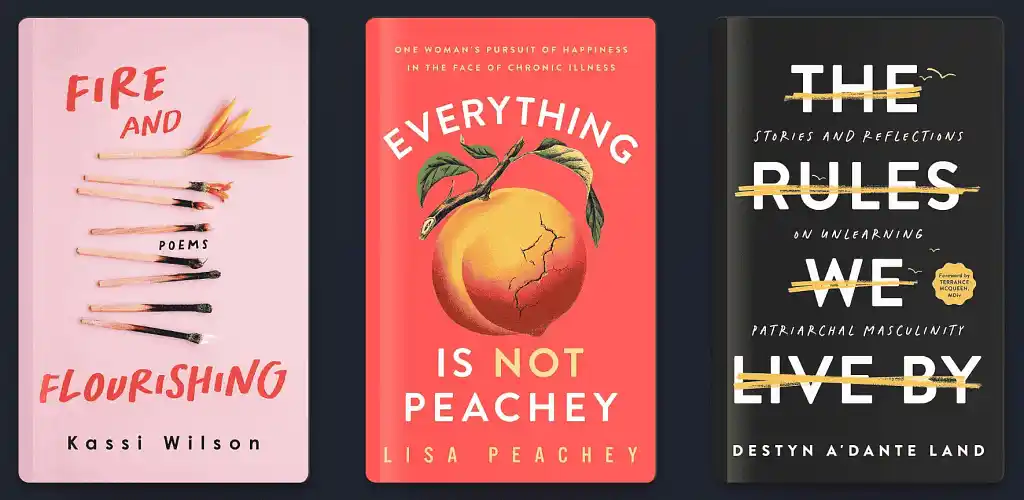
This process varies so much from publisher to publisher, and even from book to book, that I won’t go into specific detail about what to expect. Your publisher should give you the rundown before you sign with them (and if they don’t, make sure to ask!)
However, here are a few general tips which can help at this stage:
- Be patient and flexible. The sheer length of the writing and querying process might have you feeling restless — but these last few coats of polish are vital to selling your book.
- If you don’t like something, suggest an alternative. While it’s good to be open-minded, sometimes your publisher will have ideas you simply don’t like. You’ll have a better chance of getting what you want if you propose another solution! For example, if you dislike the initial cover concepts for your book, come to the next design meeting with examples of cover designs you do like.
- Continue to work on your writing and other projects. It can take years for a traditionally published book to get released, so don’t just sit around waiting. Instead, stay busy with more writing or any other creative hobbies. Who knows: you might even finish and sell your next project while waiting for your first book to come out!
10. Publish your book
By the time your book finally hits the shelves, you’ve likely been through months or years of drafting, revisions, marketing discussions, etc.
So yes, you’ll have some promotion to do, some copies to push, and ideally you’ll have started thinking about your next book as well… but really, when your first book gets published, the main thing to do is celebrate.
It takes a lot to write and publish a book, but you’ve done it! And however you’ve gotten there — whether via a small press or a Big 5 publisher, a single–book or multi-book deal, a national tour or a couple of local signings — you can now call yourself a published author.
I wish you all the best of luck throughout this entire journey, and on marketing your eventual published book… which you can learn more about in this post of book marketing tips (a useful read even if you’re mostly following your publisher’s plan!).
Other than that, all I can say is: keep writing, stay striving, and trust the publishing process. It may be a long one, but it will be worth it in the end.

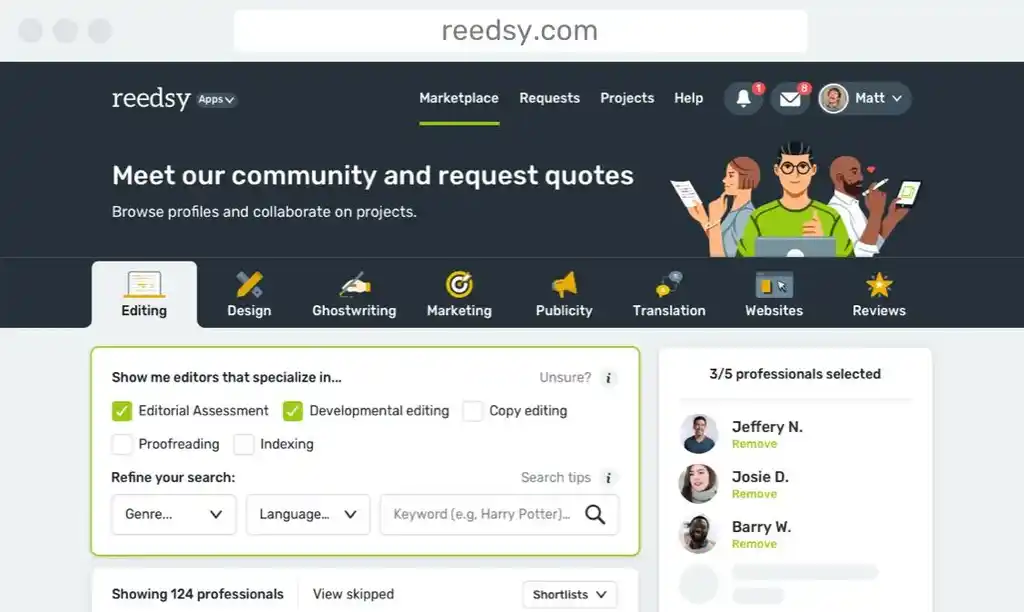
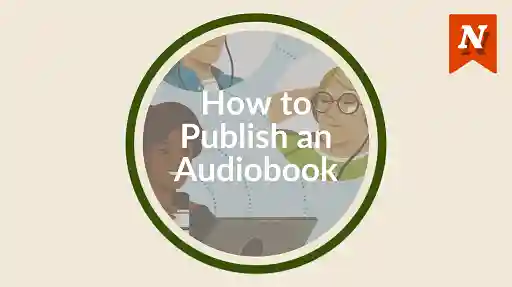

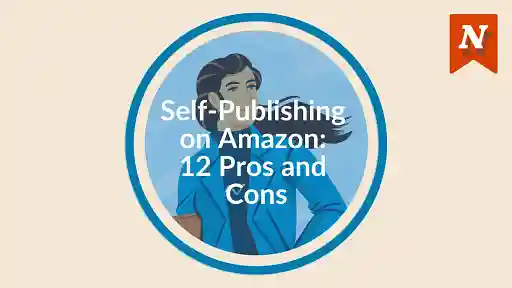
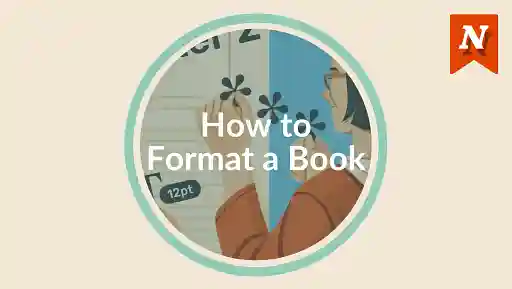
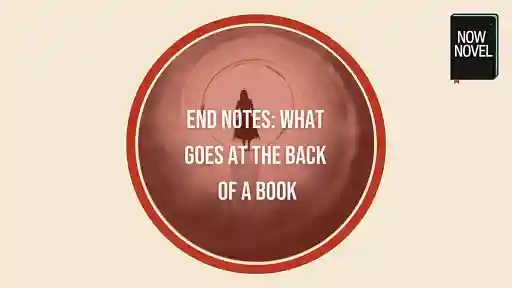
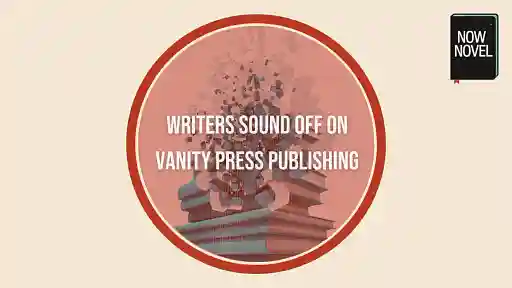



Thanks so much . I have not seen before where this matter of becoming a published author has been given such an A to Z treatment. The explanations were quite detailed , explicit at the same time, coupled with apt illustrations. It made such interesting reading. I know which stage I am in and will continue to make progress until step 10 and beyond....
Ohita Afeisume - Over 9 years ago
To publish a book in Australia, sydney HOW MUCH WILL IT COST?
Afolabi Shola Isaiah - Over 6 years ago
These are useful tips that I will definitely use when writing my own book that I am currently working on. I started writing my own book after reading about the book "Things Fall Apart" on the site and was very inspired by it. I really liked this book, so I recommend it to everyone.
Studydriver - Almost 5 years ago
Hi there, thank you for sharing that. It is indeed a fascinating book by the late Chinua Achebe. Anthills of the Savannah is also great.
Jordan - Almost 5 years ago
Wow this is a good knowledge to be imparted now I know the level I am many thanks to you
Omladu Thankgod - Almost 5 years ago
Thank you for your feedback, Omladu. Good luck with the road to publishing ahead.
Jordan - Almost 5 years ago
Wow I think this will be great for my book!
Nonamegurl - Almost 5 years ago
Great, good luck with it! If you need any help, feel free to ask our community in our writing critique groups.
Jordan - Almost 5 years ago
That's great tips
Kusum - Almost 5 years ago
We're happy you found them helfpul, Kusum!
Jordan - Almost 5 years ago
Great advise is given here with detailed plans for anyone, who is looking forward for embarking on a journey of writing books and getting them published.
Himmat - Over 4 years ago
Hi Himmat, thank you for your ind feedback and for reading our blog!
Jordan - Over 4 years ago
Nice , it will help me to publish my book at the age of 13
Yashita Srivastava - Over 4 years ago
Great, Yashita! Good luck.
Jordan - Over 4 years ago
Great advice and information
Devon Wilson - About 4 years ago
Love this! An amazing post with great tips as always. Anyone will find your post useful. Keep up the good work.
Clark - Almost 4 years ago
Hi Clark, thank you for your kind feedback and for reading our blog. Will do that, have a great week.
Jordan - Almost 4 years ago
Thank you for information
Durga - Over 3 years ago
This is perfect for me. I've been told several times I should write a book about my life experiences. I just didn't know how to approach it. Thank you.
Walter Ely - Almost 3 years ago
Hi Walter, I'm so glad to hear that. This is the year, good luck with your memoir/autobiography/whatever form your life-writing takes.
Jordan - Almost 3 years ago
Great steps to guide me on this process. Eliminates a lot of unnecessary confusion. I am going to write a book about resilience and this process will narrow my scope.
Riki Hawk - Over 2 years ago
Hi Riki, thank you for your feedback. That sounds great, I'd love to read it. Everyone could use a little help with that.
Jordan - Over 2 years ago